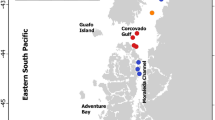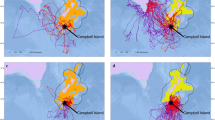Abstract
The original purpose of Vessel Monitoring System (VMS) is for enforcement and control of vessel sailing. With the application of VMS in fishing vessels, more and more population dynamic studies have used VMS data to improve the accuracy of fisheries stock assessment. In this paper, we simulated the trawl trajectory under different time intervals using the cubic Hermite spline (cHs) interpolation method based on the VMS data of 8 single otter trawl vessels (totally 36000 data items) fishing in Zhoushan fishing ground from September 2012 to December 2012, and selected the appropriate time interval. We then determined vessels’ activities (fishing or non-fishing) by comparing VMS speed data with the corresponding speeds from logbooks. The results showed that the error of simulated trajectory greatly increased with the increase of time intervals of VMS data when they were longer than 30 minutes. Comparing the speeds from VMS with those from the corresponding logbooks, we found that the vessels’ speeds were between 2.5 kn and 5.0 kn in fishing. The cHs interpolation method is a new choice for improving the accuracy of estimation of sailing trajectory, and the VMS can be used to determine the vessels’ activities with the analysis of their trajectories and speeds. Therefore, when the fishery information is limited, VMS can be one of the important data sources for fisheries stock assessment, and more attention should be paid to its construction and application to fisheries stock assessment and management.
Similar content being viewed by others
References
Bastardie, F. J., Nielsen, R., Ulrich, C., Egekvist, J., and Degel, H., 2010. Detailed mapping of fishing effort and landings by coupling fishing logbooks with satellite-recorded vessel geo-location. Fisheries Research, 106: 41–53, DOI: 10.1016/j.fishers.2010.06.016.
Cui, X. F., Huang, X. S., and Wang, S. M., 2010. The design of Vessel Monitoring System. Fishery Modernization, 37(1): 67–72.
Defra, 2004. Review of Marine Nature Conservation: Working Group Report to Government. Department for Environment. Food and Rural Affairs, London, 1–139.
Deng, R., Dichmont, C., Milton, D., Haywood, M., Vance, D., Hall, N., and Die, D., 2005. Can vessel monitoring system data also be used to study trawling intensity and population depletion? The example of Australia’s northern prawn fishery. Canadian Journal of Fisheries and Aquatic Sciences, 62(3):611–622, DOI: 10.1139/F04-219.
Die, D., and Ellis, N., 1999. Aggregation dynamics in penaeid fisheries:banana prawns (Penaeus merguiensis) in the Australian Northern Prawn Fishery. Fresh Water, 50: 667–675, DOI: 10.1071/MF98124.
Drouin, M., 2001.Vessel Monitoring Systems gain ground. Pacific Fish, 22: 31.
Eastwood, P. D., Mills, C. M., Aldridge, J. N., Houghton, C. A., and Rogers, S. I., 2007. Human activities in UK offshore waters: An assessment of direct, physical pressure on the seabed. ICES Journal of Marine Science, 64: 453–463, DOI: 10.1093/icesjms/fsm001.
Fonseca, T., Campos, A., Afonso-Dias, M., Fonseca, P., and Pereira, J., 2008. Trawling for cedhalopods off the Portuguese coast-fleet dynamic and landings composition. Fisheries Research, 92: 180–188, DOI: 10.1016/j.fishres.2008.01.015.
Gerritsen, H., and Lordan, C., 2011. Inteagrating vessel monitoring systems (VMS) data with daily catch data from logbooks to explore the spatial distribution of catch and effort at high resolution. ICES Journal of Marine Science, 65: 245–252, DOI: 10.1093/icesjms/fsq137.
Hedger, R. D., Martin, F., Dodson, J. J., Hatin, D., Caron, F., and Whoriskey, F. G., 2008. The optimized interpolation of fish positions and speeds in an array of fixed acoustic receivers. ICES Journal of Marine Science, 65(7): 1248–1259, DOI: 10.1093/icesjms/fsn109.
Hintzen, N. T., Piet, G. J., and Brunel, T., 2010. Improved estimation of trawling tracks using cubic Hermite spline interpolation of position registration data. Fisheries Research, 101(1): 108–115, DOI: 10.1016/j.fishres.2009.09.014.
Hu, Y. H., 2011. The research on the optimized methods of geometric Hermite interpolation. Master thesis. Central South University, Changsha, 11–17.
Jennings, S., and Kaiser, M. J., 1998. The effects of fishing on marine ecosystems. Advances in Marine Biology, 34: 201–352, DOI: 10.1016/S0065-2881(08)60212-6.
Kourti, N., Shepherd, I., Greidanus, H., Alvarez, M., Aresu, E., Bauna, T., Chesworth, J., Lemoineg, G., and Schawrtz, G., 2005. Integrating remote sensing in fisheries control. Fisheries Management and Ecology. 12(5): 295–307, DOI: 10.1111/j.1365-2400.2005.00452.x.
Lee, J., South, A. B., and Simon, J., 2012. Developing reliable, repeatable, and accessible methods to provide high-resolution estimates of fishing-effort distributions from vessel monitoring system (VMS) data. Virginia Tech, 4: 1260–1271, DOI: 10.1093/icesjms/fsq010.
Li, J. J., 2007. The research on the optimized methods of cubic geometric Hermite interpolation. Master thesis. Central South University, Changsha, 13–42.
Mills, C. M., Rogers, S. I., Tasker, M. L., Eastwood, P. D., and Piet, G. J., 2004. Developing the use of satellite fishing Vessel Monitoring System data in spatial management. International Council for the Exploration of the Sea. Annual Science Conference, Vigo, Spain.
Mills, C. M., Townsend, S. E., Jennings, S., Eastwood, P. D., and Houghton, C. A., 2007. Estimating high resolution trawl fishing effort from satellite-based vessel monitoring system data. ICES Journal of Marine Science, 64: 248–255, DOI: 10.1093/icesjms/fsl026.
Mullowney, D. R., and Dawe, E. G., 2009. Development of performance indices for the Newfoundland and Labrador snow crab (Chionoecetes opilio) fishery using data from a vessel monitoring system. Fisheries Research, 100: 248–254 DOI: 10.1016/j.fishres.2009.08.006.
Murawski, S. A., Wigley, S. E., Fogarty, M. J., Rago, P. J., and Mountain, D. G., 2005. Effort distribution and catch patterns adjacent to temperate MPAs. ICES Journal of Marine Science, 62: 1150–1167, DOI: 10.1016/j.icesjms.2005.04.005.
Piet, G. J., Rijnsdorp, A. D., Bergman, M. J. N., van Santbrink, J. W., Craeymeersch, J., and Buijs, J., 2000. A quantitative evaluation of the impact of beam trawling on benthic fauna in the southern North Sea. ICES Journal of Marine Science, 57: 1332–1339, DOI: 10.1006/jmsc.2000.0915.
Plamer, M. C., and Wigley, S. E., 2009. Using positional data from Vessel Monitoring Systems to validate the logbook-reported area fished and the stock allocation of commercial fisheries landings. North American Journal of Fishery Management, 29: 928–942, DOI: 10.1577/M08-135.1.
Ren, Y. Q., and Yao, J., 2003. Statistical study on the action of collision avoidance of trawling vessel. Journal of Dalian Ocean University, 18(1): 72–74.
Rijnsdrop, A. D., Buys, A. M., Storbeck, F., and Visser, E. G., 1998. Micro-scale distribution of beam trawl effort in the southern North Sea between 1993 and 1996 in relation to the trawling frequency of the sea bed and the impact on benthic organisms. ICES Journal of Marine Science, 65: 1081–1091, DOI: 10.1016/j.fishres.2009.08.006.
Stelzenmuller, V., Rogers, S. I., and Mill, C., 2008. Spatio-temporal patterns of fishing pressure on UK marine landscapes, and their implications for spatial planning and management. ICES Journal of Marine Science, 65: 1081–1091, DOI: 10.1093/icesjms/fsn073.
Walter, III, J. F., Hoening, J. M, and Gedamke, T., 2007. Correcting for effective area fished in fishery-dependent depletion estimates of abundance and capture efficiency. ICES Journal of Marine Science, 64: 1760–1771, DOI: 10.1093/icesjms/fsm147.
Ye, Y. M., and Chi, H. F., 2012. The application of AIS for vessel in Zhoushan. China Water Transport, 12(2): 13–14.
Author information
Authors and Affiliations
Corresponding author
Rights and permissions
About this article
Cite this article
Wang, Y., Wang, Y. & Zheng, J. Analyses of trawling track and fishing activity based on the data of vessel monitoring system (VMS): A case study of the single otter trawl vessels in the Zhoushan fishing ground. J. Ocean Univ. China 14, 89–96 (2015). https://doi.org/10.1007/s11802-015-2467-6
Received:
Revised:
Accepted:
Published:
Issue Date:
DOI: https://doi.org/10.1007/s11802-015-2467-6




